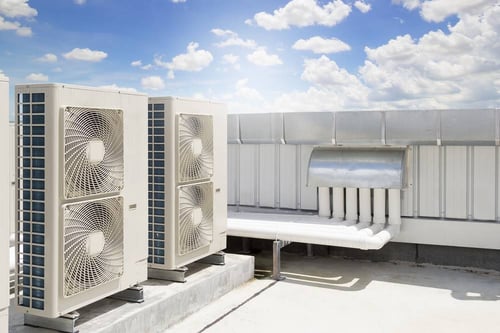What Does MEP Mean in Construction?

What is MEP Engineering?
MEP stands for mechanical, electrical and plumbing engineering. These three technical fields cover the systems that make buildings habitable for humans. MEP installations are normally designed together, due to the high degree of interaction between them. This combined approach also prevents equipment location conflicts - clashes are a common problem when mechanical, electrical and plumbing systems are designed in isolation.
Working with an experienced MEP engineering firm offers many advantages: they can optimize material requirements to reduce installation costs, while achieving high performance and meeting codes. These services are very valuable in New York City, since local building costs are high and construction codes are demanding.
M: Mechanical Engineering

Buildings use many types of mechanical systems. However, most of the mechanical design work in residential and commercial buildings deals with HVAC: space heating, ventilation, and air conditioning systems.
- These systems keep the indoor temperature and humidity within a range that provides comfort and health.
- Mechanical ventilation also provides a constant supply of fresh air, to keep pollutants at low and safe levels.
Mechanical installations operate at their best when equipment capacity is adequate. Contrary to popular belief, over engineering has many negative consequences. For example, oversized chillers and boilers tend to cycle rapidly, wearing down faster and causing indoor temperature variations. Another consequence of over engineering in mechanical systems is poor control of indoor humidity.
- ASHRAE recommends keeping the relative humidity between 30% and 60%. This humidity range minimizes airborne bacteria and viruses, while being comfortable.
- There are negative consequences when humidity falls outside this range for extended periods. Low humidity can irritate the skin and airways, while high humidity stimulates the growth of mold and bacteria.
Other than sizing HVAC equipment correctly, mechanical design involves finding the optimal routes for heat distribution systems: air ducts, refrigerant lines, hydronic piping, steam piping, etc. If combustion is used for heating, which is the case in many NYC buildings, equipment must be properly vented to remove harmful exhaust gases.
Planning a Construction Project? Let Us Provide Professional MEP Design!
E: Electrical Engineering

In high-rise constructions, finding the optimal routes for electrical conduit and wiring can save plenty of material. There tends to be more design flexibility than with mechanical systems, since electrical circuits use less space and can be routed around obstacles more easily. With the aid of MEP design software, conduit and wiring can be laid out while minimizing total circuit length, and avoiding location conflicts with mechanical and plumbing installations.
Lighting installations are the electrical system with the highest energy consumption in most buildings. LED lighting is frequently recommended by energy consultants, since it achieves typical savings of 30% to 90%, depending on the lamp type replaced. Many design software packages can simulate lighting, to determine the optimal number of fixtures and their layout.
HVAC is an area that requires close collaboration between mechanical and electrical engineers:
- Mechanical engineers calculate the space heating and air conditioning loads, to determine equipment capacities.
- Electrical engineers design the electrical circuits and protection measures that allow this equipment to operate continuously and safely.
Furnaces and boilers are the main HVAC components that use fossil fuels as an energy source. Air conditioners, chillers, air handling systems and hydronic pumps work with electricity in most cases.
P: Plumbing Engineering

Plumbing installations are also subject to code requirements. The plumbing design process involves a layout of piping routes, similar to ductwork in mechanical design and conduit in electrical design. MEP engineers use advanced software to simplify the process and avoid clashes.
Plumbing installations interact with mechanical and electrical systems at many points, and collaboration among design teams is important:
- High-rise buildings normally need water booster pumps, which run with electricity.
- Domestic hot water systems normally use a dedicated water heater, or a heat exchanger connected to a space heating boiler.
Fire protection design can be challenging in NYC, since local codes are especially demanding in that area. In addition, Local Law 26 of 2004 made automatic fire sprinklers mandatory for all business occupancies taller than 100 feet. The law was also applied retroactively for existing constructions, and the deadline to complete the building upgrade was July 1, 2019.
Added Value of MEP Design
When designing building systems, an integrated MEP approach achieves better results than designing each system in isolation. Interactions between building systems are difficult to coordinate when the design process is isolated, and equipment location conflicts are very likely.
- Given the complexity of MEP system layouts, modern engineering firms use software to speed up the design process.
- Simple and repetitive tasks are automated by a computer, while MEP engineers can focus on making the best design decisions.
When modern MEP software is used, the value of the 3D model produced during the design phase goes beyond the construction stage. The model can be used as reference for maintenance activities, and it can be updated along with the building major renovations.
Nearby EngineersNew York Engineers has a MEP design track record of 1,000+ projects. Contact us via email (info@ny-engineers.com) or phone (786) 788-0295212-575-5300, and make sure your building systems meet codes.

Michael Tobias
Michael Tobias, the Founding Principal of NY Engineers, currently leads a team of 150+ MEP/FP engineers and has led over 4,000 projects in the US
Join 15,000+ Fellow Architects and Contractors
Get expert engineering tips straight to your inbox. Subscribe to the NY Engineers Blog below.

